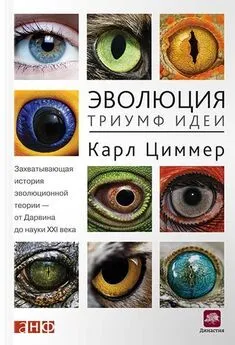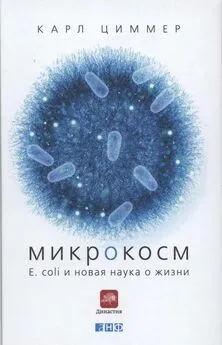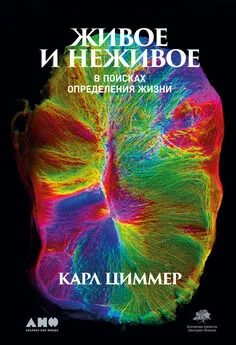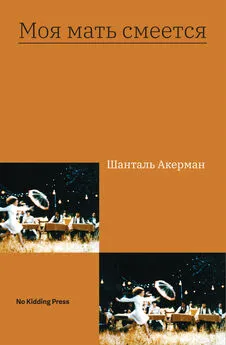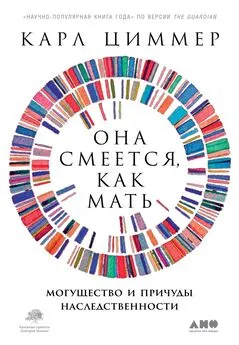Карл Циммер - Она смеется, как мать [Могущество и причуды наследственности] [litres]
- Название:Она смеется, как мать [Могущество и причуды наследственности] [litres]
- Автор:
- Жанр:
- Издательство:Литагент Альпина
- Год:2020
- Город:Москва
- ISBN:978-5-0013-9210-1
- Рейтинг:
- Избранное:Добавить в избранное
-
Отзывы:
-
Ваша оценка:
Карл Циммер - Она смеется, как мать [Могущество и причуды наследственности] [litres] краткое содержание
И культура, и традиции, география и экономика, технологии и то, в каком состоянии мы оставим планету, наконец. По мере развития науки появляется все больше способов вмешиваться в разные формы наследственности, что открывает потрясающие возможности, но одновременно ставит новые проблемы.
Технология CRISPR-Cas9, используемая для редактирования генома, генный драйв и создание яйцеклетки и сперматозоида из клеток кожи – список открытий растет с каждым днем, давая достаточно поводов для оптимизма… или беспокойства. В любом случае прежним мир уже не будет.
Карл Циммер знаменит своим умением рассказывать понятно. В этой важнейшей книге, которая основана на самых последних исследованиях и научных прорывах, автор снова доказал свое звание одного из лучших научных журналистов в мире.
Она смеется, как мать [Могущество и причуды наследственности] [litres] - читать онлайн бесплатно ознакомительный отрывок
Интервал:
Закладка:
Gartler, Stanley M. 2015. “Mary Lyon’s X–Inactivation Studies in the Mouse Laid the Foundation for the Field of Mammalian Dosage Compensation.” Journal of Genetics 94: 563–65.
Gartler, Stanley M., Sorrell H. Waxman, and Eloise Giblett. 1962. “An XX/XY Human Hermaphrodite Resulting from Double Fertilization.” Proceedings of the National Academy of Sciences of the United States of America 48: 332–35.
Gatewood, Willard B. 1990. Aristocrats of Color: The Black Elite, 1880–1920. Bloomington: Indiana University Press.
Geison, G. L. 1969. “Darwin and Heredity: The Evolution of His Hypothesis of Pangenesis.” Journal of the History of Medicine and Allied Sciences 24: 375–411.
Gelman, Susan A. 2003. The Essential Child: Origins of Essentialism in Everyday Thought. Oxford: Oxford University Press.
Genetics and Medicine Historical Network.” Interview with Dr. Mary Lyon.” Interviewed by Peter Harper. Recorded October 11, 2004. https://genmedhist.eshg.org/fiIeadmin/content/website-layout/interviewees-attachments/Lyon%2C%20Mary.pdf(accessed August 24, 2017).
Génin, Emmanuelle, and Francoise Clerget-Darpoux. 2015. “The Missing Heritability Paradigm: A Dramatic Resurgence of the GIGO Syndrome in Genetics.” Human Heredity 79: 1–4.
Gershenson, S. 1928. “A New Sex-Ratio Abnormality in Drosophila obscura.” Genetics 13: 488–507.
Geserick, Gunther, and Ingo Wirth. 2012. “Genetic Kinship Investigation from Blood Groups to DNA Markers.” Transfusion Medicine and Hemotherapy 39: 163–75.
Gibbons, Ann. 2006. The First Human: The Race to Discover Our Earliest Ancestors. New York: Doubleday.
Gibbs, W. Wayt. 2014. “Biomarkers and Ageing: The Clock-Watcher.” Nature 508: 168.
Giese, Lucretia Hoover. 2001. “A Rare Crossing: Frida Kahlo and Luther Burbank.” American Art 15: 52–73.
Gilbert, Scott F. 2014. “A Holobiont Birth Narrative: The Epigenetic Transmission of the HumanMicrobiome.” Frontiers in Genetics 5: 282.
Gill, Peter, Pavel L. Ivanov, Colin Kimpton, Romelle Piercy, Nicola Benson, Gillian Tully, Ian Evett, Erika Hagelberg, and Kevin Sullivan. 1994. “Identification of the Remains of the Romanov Family by DNA Analysis.” Nature Genetics 6: 130–35.
Gillham, Nicholas W. 2001. A Life of Sir Francis Galton: From African Exploration to the Birth of Eugenics. New York: Oxford University Press.
Gitschier, Jane. 2010. “The Gift of Observation: An Interview with Mary Lyon.” PLOS Genetics 6: el000813.
Glass, Bentley. 1980. “The Strange Encounter of Luther Burbank and George Harrison Shull.” Proceedings of the American Philosophical Society 124: 133–53.
Gliboff, Sander. 2013. “The Many Sides of Gregor Mendel.” In Outsider Scientists: Routes to Innovation in Biology. Edited by Oren Harman and Michael R. Dietrich. Chicago: University of Chicago Press.
Goddard, Henry H. 1908. “A Group of Feeble-Minded Children with Special Regard to Their Number Concepts.” Supplement to the Training School 2: 1–16.
________. 1910a. “Heredity of Feeble-Mindedness.” American Breeders Magazine 1: 165–78.
________. 1910b. “The Institution for Mentally Defective Children: An Unusual Opportunity for Scientific Research.” Training School 7: 275–78.
________. 1910c. “A Measuring Scale for Intelligence.” Training School 6: 146–55.
________. 1911a. ‘”The Elimination of Feeble-Mindedness.” American Academy of Political and Social Science 37: 261–72.
________. 1911b. “A Revision of the Binet Scale.” Training School 8: 56–62.
________. 1911c. “Two Thousand Normal Children Tested by the Binet Scale.” Training School 1: 310–12.
________. 1912. The Kallikak Family. A Study in the Heredity of Feeble-Mindedness. New York: Macmillan.
________. 1914. Feeble-Mindedness: Its Causes and Consequences. New York: Macmillan.
________. 1916. “The Menace of Mental Deficiency from the Standpoint of Heredity.” Boston Medical and Surgical Journal 175: 269–71.
________. 1917. “Mental Tests and the Immigrant.” Journal of Delinquency 2: 243–77.
________. 1920. Human Efficiency and Levels of Intelligence: Lectures Delivered at Princeton University April 7, 8, 10, 11, 1919. Princeton: Princeton University Press.
________. 1931. “Anniversary Address.” In Twenty-Five Years: The Vineland Laboratory 1906–1931. Edited by Edgard A. Doll. Vineland: Smith Printing House.
________. 1942.’”In Defense of the Kallikak Study.” Science 95: 574–76.
Goldstein, Sam, Dana Princiotta, and Jack A. Naglieri, eds. 2015. Handbook of Intelligence: Evolutionary Theory, Historical Perspective, and Current Concepts. New York: Springer.
Goodell, Margaret A., Hoang Nguyen, and Noah Shroyer. 2015. “Somatic Stem Cell Heterogeneity: Diversity in the Blood, Skin and Intestinal Stem Cell Compartments.” Nature Reviews Molecular Cell Biology 16: 5299–5330.
Goodrich, Julia K., Emily R. Davenport, Michelle Beaumont, Matthew A. Jackson, Rob Knight, Carole Ober, Tim D. Spector, Jordana T. Bell, Andrew G. Clark, and Ruth E. Ley. 2016.” Genetic Determinants of the Gut Microbiome in UK Twins.” Cell Host & Microbe 19: 731–43.
________, Jillian L. Waters, Angela C. Poole, Jessica L. Sutter, Omry Koren, Ran Blekhman, Michelle Beaumont, and others. 2014. “Human Genetics Shape the Gut Microbiome.” Cell 159: 789–99.
Goodspeed, Weston Arthur. 1907. History of the Goodspeed Family, Profusely Illustrated: Being a Genealogical and Narrative Record Extending from 1380 to 1906, and Embracing Material Concerning the Family Collected during Eighteen Years of Research, Together with Maps, Plats, Charts, Etc. Chicago: W. A. Goodspeed.
Goolam, Mubeen. 2016. “Heterogeneity in Oct4 and Sox2 Targets Biases Cell Fate in 4-CeIIMouse Embryos.” Cell 165: 61–74.
Gosney, E. S., and Paul Popenoe. 1929. Sterilization for Human Betterment: A Summary of Results of 6,000 Operations in California, 1909–1929. New York: Macmillan.
Grant, Madison. 1916. The Passing of the Great Race: Or, the Racial Basis of European History. New York: Charles Scribner’s Sons.
Grasgruber, P., J. Cacek, T. Kalina, and M. Sebera. 2014. “The Role of Nutrition and Genetics as Key Determinants of the Positive Height Trend.” Economics and Human Biology 15: 81–100.
Gray, Michael W. 2012. “Mitochondrial Evolution.” Cold Spring Harbor Perspectives in Biology 4: a011403.
Greally, John. 2015. “Over-Interpreted Epigenetics Study of the Week.” “Epgntxeinstein” blog, August 23. http://epgntxeinstein.tumblr.com/post/127416455028/over-interpreted-epigenetics-study-of-the-week(accessed July 26, 2017).
Greely, Henry T. 2016. The End of Sex and the Future of Human Reproduction. Cambridge: Harvard University Press.
Greenfieldboyce, Nell. 2017. “Fate of Irish Giant’s Bones Rekindles Debate over Rights After Death.” NPR All Things Considered, March 13.
Griesemer, James R. 2005. “The Informational Gene and the Substantial Body: On the Generalization of Evolutionary Theory by Abstraction.” In Idealization XII: Correcting the Model. Idealization and Abstraction in the Sciences. Edited by Martin R. Jones and Nancy Cartwright. Amsterdam: Rodopi.
Griffith, Malachi, Christopher A. Miller, Obi L. Griffith, Kilannin Krysiak, Zachary L., Skidmore, Avinash Ramu, Jason R. Walker, and others. 2015. “Optimizing Cancer Genome Sequencing and Analysis.” Cell Systems 1: 210–23.
Grognet, Pierre, Hervé Lalucque, Fabienne Malagnac, and Philippe Silar. 2014. “Genes That Bias Mendelian Segregation.” PLOS Genetics 10: el004387.
Grudnik, Jennifer L., and John H. Kranzler. 2001. “Meta-Analysis of the Relationship Between Intelligence and Inspection Time.” Intelligence 29: 523–35.
Grüneberg, Hans. 1967. “Sex-linked Genes in Man and the Lyon Hypothesis.” Annals of Human Genetics 30: 239–57.
Guevara-Aguirre, Jaime, Priya Balasubramanian, Marco Guevara-Aguirre, Min Wei, Federica Madia, Chia-Wei Cheng, David Hwang, and others. 2011. “Growth Hormone Receptor Deficiency Is Associated with a Major Reduction in Pro-Aging Signaling, Cancer, and Diabetes in Humans.” Science Translational Medicine 3: 70ra13.
Gull, Keith. 2010. “Boveri and Cancer: Prescient Views of Molecular Mechanisms.” Notes and Records of the Royal Society 64: 185–87.
Guo, Fan, Liying Yan, Hongshan Guo, Lin Li, Boqiang Hu, Yangyu Zhao, Jun Yong, and others. 2015. “The Transcriptome and DNA Methylome Landscapes of Human Primordial Germ Cells.” Cell 161: 1437–52.
Gustafsson, A. 1979. “Linnaeus’ Peloria: The History of a Monster.” Theoretical and Applied Genetics 54: 241–48.
Guyot, A., and С. C. Felton. 1852. The Earth and Man: Or, Physical Geography in Its Relation to the History of Mankind. London: J. W. Parker and Son.
Hadhazy, Adam. 2015. “Will Humans Keep Getting Taller?” BBC Future. May 14.
Haggard, Howard Wilcox, and E. M. Jellinek. 1942. Alcohol Explored. Garden City, NY: Doubleday, Doran & Company.
Haidle, Miriam N., Nicholas J. Conard, and Michael Bolus, eds. 2016. The Nature of Culture: Based on an Interdisciplinary Symposium “The Nature of Culture,” Tubingen, Germany. Dordecht: Springer.
Haier, Richard J. 2017. The Neuroscience of Intelligence. New York: Cambridge University Press.
Haig, David. 2016. “Intracellular Evolution of Mitochondrial DNA (mtDNA) and the Tragedy of the Cytoplasmic Commons.” BioEssays 38. doi: 10.1002/bies.201600003.
Hains, James H., Gary R. Carter, Scott D. Kraus, Charles A. Mayo, and Howard E. Winn. 1982.”Feeding Behavior of the Humpback Whale, Megaptera novaeangliae, in the Western North Atlantic.” Fishery Bulletin 80: 259–68.
Haley, Alex. 1972. “My Furthest-Back Person – The African.” New York Times Magazine, July 16.
Hall, Stephen S. 2006. Size Matters: How Height Affects the Health, Happiness, and Success of Boys – and the Men They Become. Boston: Houghton Mifflin.
Hamilton, Garry. 2015. “The Hidden Risks for ‘Three-Person’ Babies.” Nature 525: 444.
Hammer, Michael F., Doron M. Behar, Tatiana M. Karafet, Fernando L. Mendez, Brian Hallmark, Tamar Erez, Lev A. Zhivotovsky, Saharon Rosset, and Karl Skorecki. 2009.”Extended Y Chromosome Haplotypes Resolve Multiple and Unique Lineages of the Jewish Priesthood.” Human Genetics 126: 707–17.
________, Karl Skorecki, Sara Selig, Shraga Blazer, Bruce Rappaport, Robert Bradman, Neil Bradman, P. J. Waburton, and Monic Ismajlowicz. 1997. “Y Chromosomes of Jewish Priests.” Nature 385: 3.
Hamzelou, Jessica. 2016. “World’s First Baby Born with New ‘3 Parent’ Technique.” New Scientist, September 27.
Handyside, A. H., E. H. Kontogianni, K. Hardy, and R. M. L. Winston. 1990. “Pregnancies from Biopsied Human Preimplantation Embryos Sexed by Y-Specific DNA Amplification.” Nature 344: 768–70.
Haneda, Yata, and Frederick I. Tsuji. 1971. “Light Production in the Luminous Fishes Photoblepharon and Anomalops from the Banda Islands.” Science 173: 143–45.
Happle. Rudolf. 2002. “New Aspects of Cutaneous Mosaicism.” Journal of Dermatology 29: 681–92.
Читать дальшеИнтервал:
Закладка:
![Обложка книги Карл Циммер - Она смеется, как мать [Могущество и причуды наследственности] [litres]](/books/1075049/karl-cimmer-ona-smeetsya-kak-mat-moguchestvo-i-pr.webp)

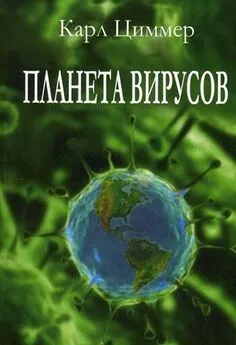
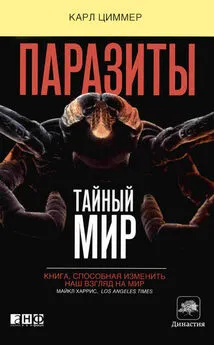

![Карл Циммер - Паразит – царь природы [Тайный мир самых опасных существ на Земле] [litres]](/books/1067054/karl-cimmer-parazit-car-prirody-tajnyj-mir-sam.webp)
